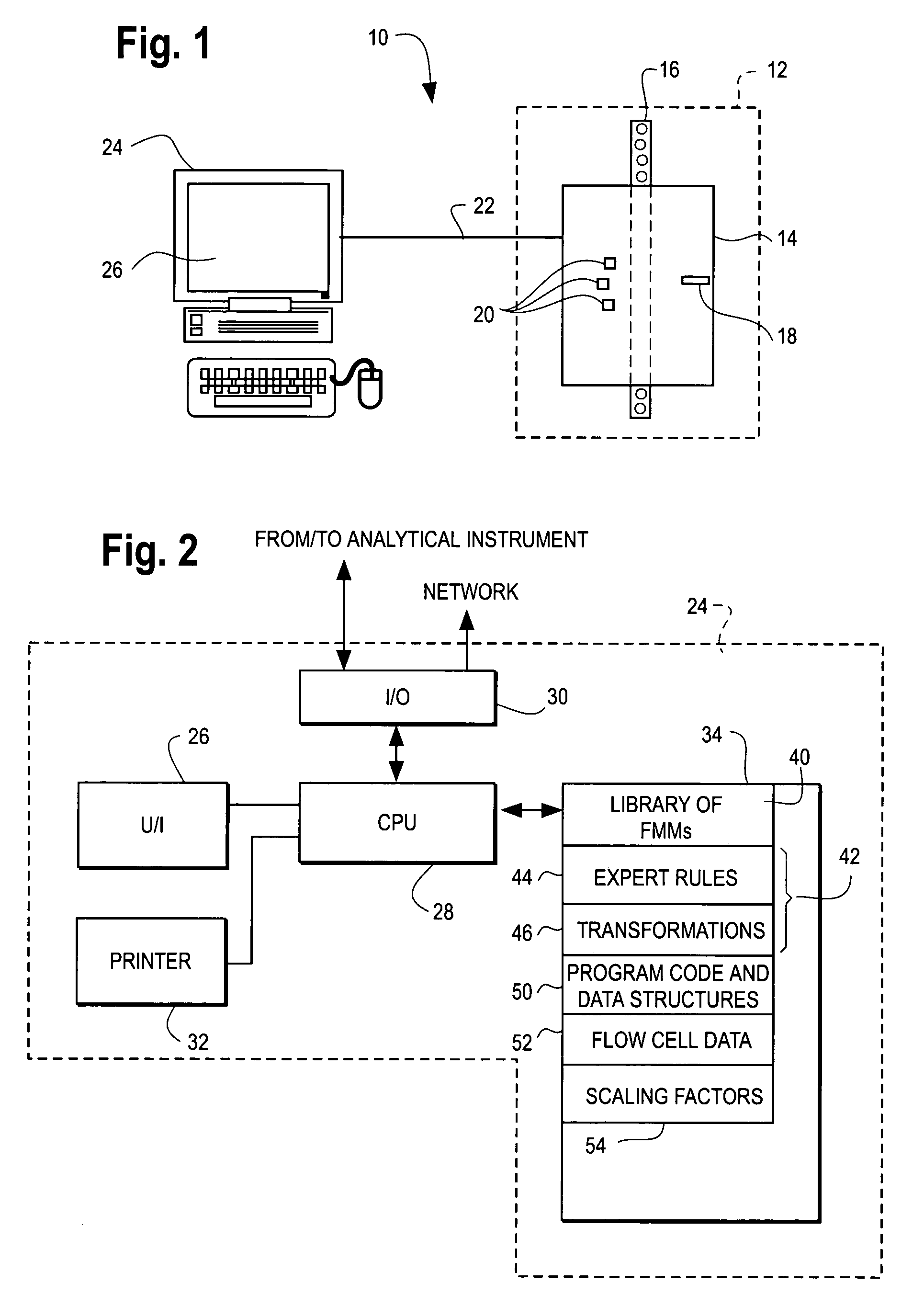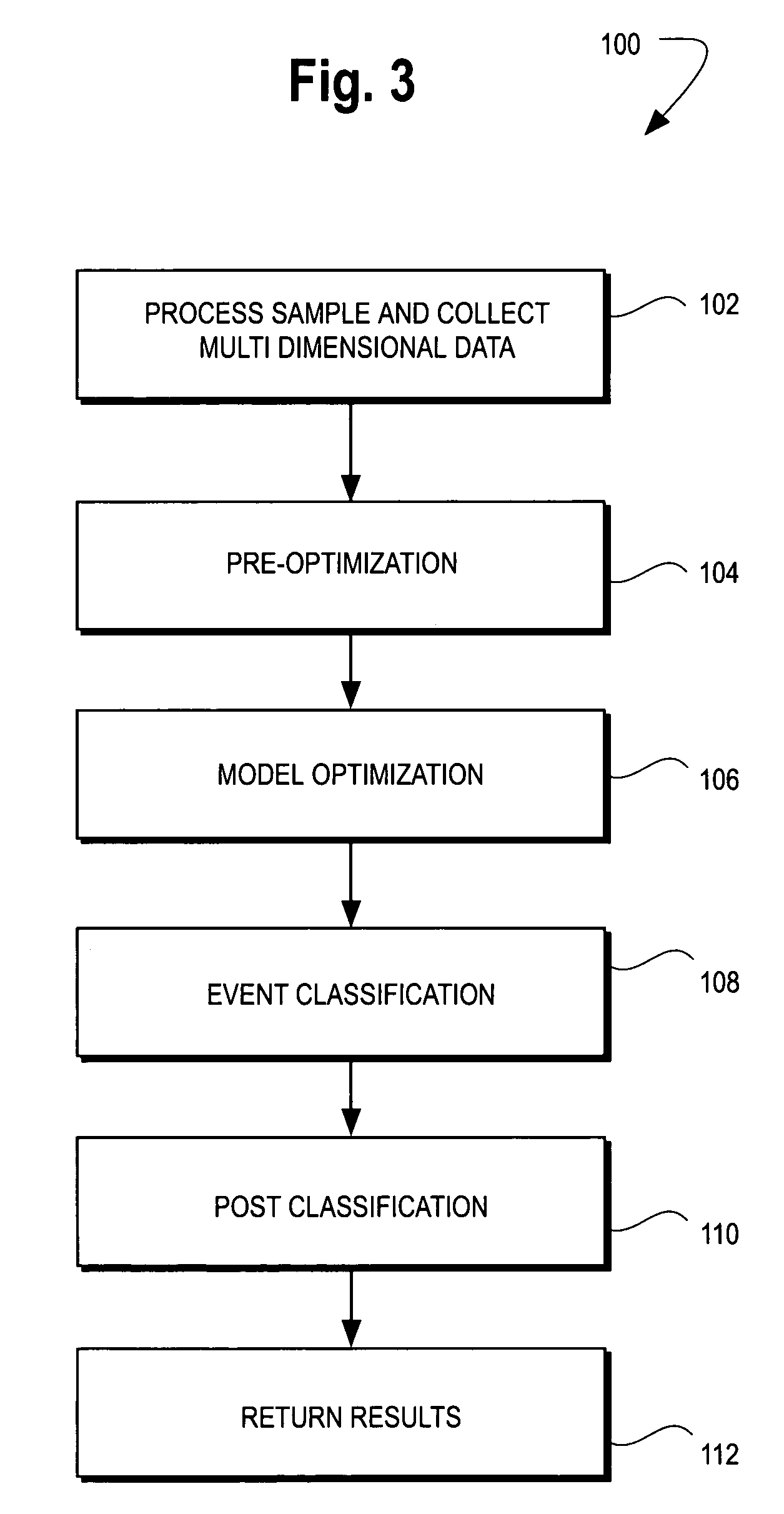Methods for identifying discrete populations (e.g., clusters) of data within a flow cytometer multi-dimensional data set
a flow cytometer and data set technology, applied in material analysis, measurement devices, instruments, etc., can solve the problems of reducing the production of red cells, unable to keep up with the removal of red cells, and low overall red blood cell count and hematocrit, so as to achieve more robust and accurate classification and accurately classify the data set into populations
- Summary
- Abstract
- Description
- Claims
- Application Information
AI Technical Summary
Benefits of technology
Problems solved by technology
Method used
Image
Examples
Embodiment Construction
[0070]Overview
[0071]As noted above, when a blood sample is passed through a flow cytometry system, the system generates N data points in multiple dimensions. In the present example, the flow cytometer obtains data in seven dimensions. The dimensions are referred to herein as “channels” and are abbreviated EXT, EXT_Int, RAS, RAS_Int, FSL, FSH, and TOF, and have been defined previously. The physical properties of the different white blood cells cause light passing through them to scatter differently. For example, larger cells generally have greater EXT and EXT_Int values due to their greater light occlusion, while cells with greater internal complexity tend to produce greater light scatter and this is observed at the FSH detector. In a flow cytometry application of this invention, the goal of the methods described herein is to find, i.e., identify and classify, these populations in the midst of noise and to give quantitative or qualitative estimates on the relative frequencies of each...
PUM
| Property | Measurement | Unit |
|---|---|---|
| thickness | aaaaa | aaaaa |
| diameter | aaaaa | aaaaa |
| diameter | aaaaa | aaaaa |
Abstract
Description
Claims
Application Information
 Login to View More
Login to View More - R&D
- Intellectual Property
- Life Sciences
- Materials
- Tech Scout
- Unparalleled Data Quality
- Higher Quality Content
- 60% Fewer Hallucinations
Browse by: Latest US Patents, China's latest patents, Technical Efficacy Thesaurus, Application Domain, Technology Topic, Popular Technical Reports.
© 2025 PatSnap. All rights reserved.Legal|Privacy policy|Modern Slavery Act Transparency Statement|Sitemap|About US| Contact US: help@patsnap.com



